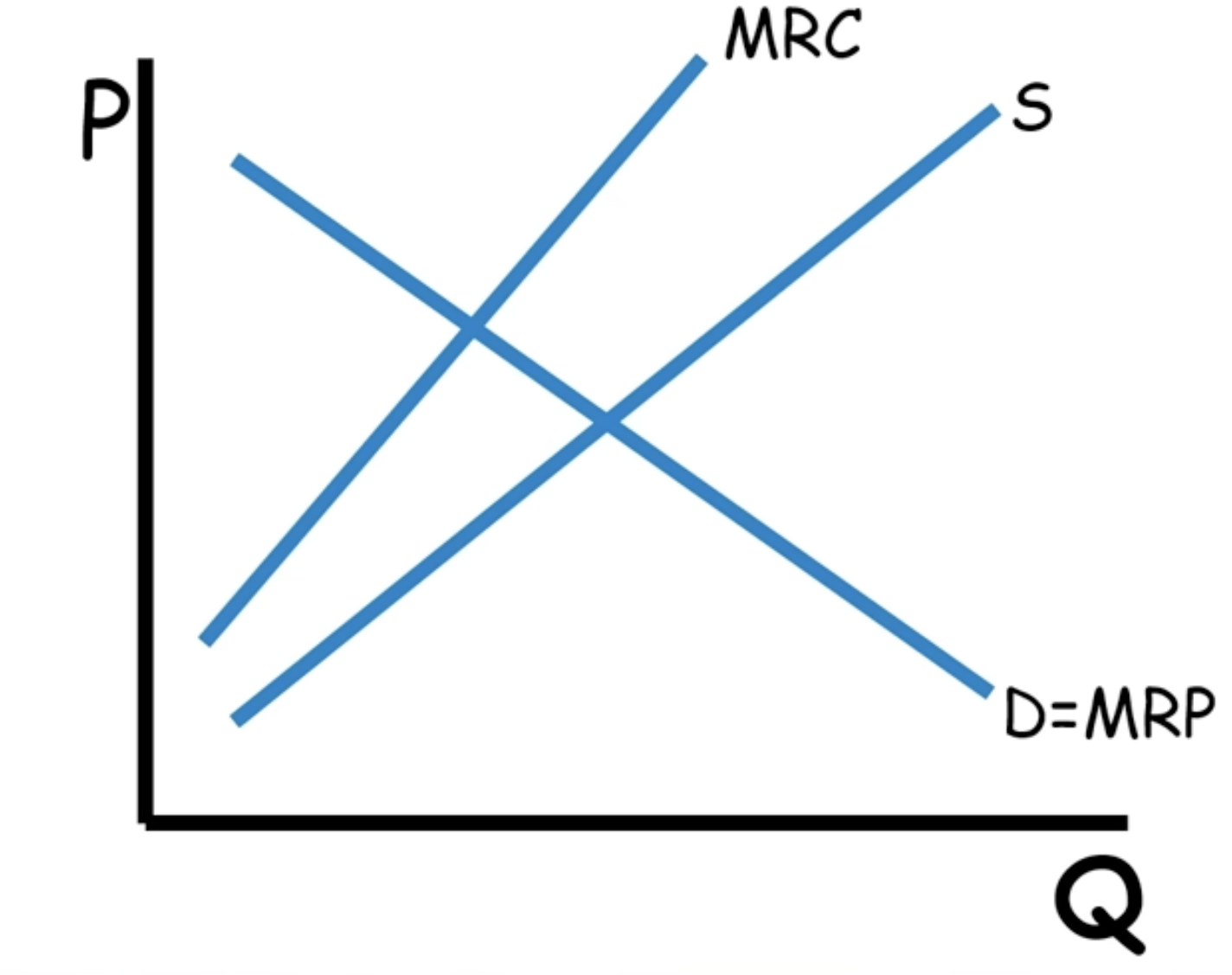AP Microeconomics - Unit 5
5.1 - Intro into Factor Markets
Factor markets are markets for the 4 factors of production (unit 1).
Price for labor → wage
Price for land → rent
Price for capital → interest
Entrepreneurship → N/A
Derived Demand: The demand for an input like labor is derived from the demand of the product being sold. (How much of Good X is being sold determines how many workers company X needs to hire)
Production Function and Diminishing Marginal Returns
The production function illustrates the relationship between the quantity of labor a business employs and the resulting output. This concept is linked to the law of diminishing marginal returns, which has three phases:
Increasing Marginal Product: As more workers are hired, the output increases at an increasing rate.
Decreasing Marginal Product: Output increases at a decreasing rate; also known as diminishing marginal returns.
Negative Marginal Product: Adding more workers decreases overall output.
Marginal Revenue Product (MRP)
To determine the optimal number of workers to hire, businesses calculate the marginal revenue product (MRP)
Marginal Revenue Product = (Marginal Revenue) x (Marginal Product)
The firm's demand for labor = marginal revenue product of the workers
This is because a firm will only pay a worker as much as the worker brings in.
The profit-maximizing number of workers is where MRP = wage.
The workers should bring in as much or more in revenue than it costs to pay their wage
Market Demand & Supply for Labor
The market demand for labor curve is downward sloping
There is an inverse relationship between the wage and the number of workers hired.
The market demand for labor curve is the sum of each firm's marginal revenue product.
Businesses are the consumers/demand in this context.
The market supply curve for labor is upward sloping.
There is a direct relationship between wage and quantity supplied
As wages increase, more workers are willing to work.
5.2 - Factor Market Changes
Labor Demand Curve Shifters
Product price
Product demand
Worker productivity
Labor Supply Curve Shifters (anything that changes how many people are able to work)
Availability of workers
Population
Age
Value of leisure time
Equilibrium Wage
The equilibrium wage and equilibrium quantity is found where the supply and demand curves intersect
An increase in the demand for labor leads to both an increase in the equilibrium wage and the equilibrium quantity.

5.3 Firms in Perfectly Competitive Factor Markets
Perfectly Competitive Factor markets
In perfectly competitive factor markets, numerous buyers of labor compete for workers.
Firms are wage takers, they have no influence on the market wage.
Marginal Resource Cost (MRC) - The amount of money a business has to pay to hire one more worker.
Marginal resource cost = market wage.
This market wage also becomes the firm's supply curve— they can hire as many workers as they want at that wage.
To determine the profit-maximizing number of workers, firms compare the marginal revenue product (MRP) with the marginal resource cost (MRC).
MRP>MRC
It's profitable to hire more workers.
MRC>MRP
It’s profitable to hire less workers.
MRP=MRC
The profit-maximizing quantity
5.4 - Monopsony
Monopsony - a market structure where there is only one buyer of a resource (labor.)
Similar to a monopoly, but instead of there being only one seller, there is only one buyer
In a monopsony:
The firm is the market.
The firm's supply curve is the labor supply curve.
The labor supply curve is upward sloping, meaning that to hire more workers, the firm must raise wages to incentivize workers to give up leisure time.
Wage vs. Marginal Resource Cost
For a monopsony, when the firm wants to hire more workers, they need to increase the wage, according to the demand curve. But then, they need to raise the wage of the existing employees to match the new wage, or they’ll leave.
The marginal resource cost (MRC) is the change in total resource cost resulting from hiring an additional worker.
For a monopsony, the marginal resource cost is greater than the wage.
Graphing Monopsony
The firm's demand curve is the marginal revenue product (MRP).
A monopsonistic firm profit maximizes where the marginal revenue product equals the marginal resource cost (MRP = MRC).
The quantity of labor is determined at the intersection of MRP and MRC.
The wage comes from the supply curve at that quantity of labor.

Monopsony vs. Perfect Competition
In a perfectly competitive market, firms pay the equilibrium wage where supply and demand intersect and hire the number of workers where supply and demand intersect.
In a monopsony, the marginal resource cost curve lies above the supply curve.
Monopsonies pay lower wages and hire fewer workers than perfectly competitive markets.
Monopsonies are not allocatively efficient and create deadweight loss.
Least Cost Combinations of Resources
Firms use different resources to produce goods.
Firms aim to find the least cost combination of resources, similar to utility maximization from unit 1.
Let's say a firm uses labor and capital. To find the least cost combination:
Divide the marginal product of each resource by its price.
Compare the results.
The profit-maximizing combination is where the marginal product per dollar is equal for all resources:
If the ratios aren't equal, employ more of the resource with the higher marginal product per dollar and less of the one with the lower marginal product per dollar. In the example, employ more capital and less labor.